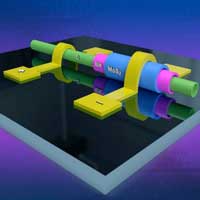 The recent synthesis of one-dimensional van der Waals heterostructures, a type of heterostructure made by layering two-dimensional materials that are one atom thick, may lead to new, miniaturized electronics that are currently not possible.
The recent synthesis of one-dimensional van der Waals heterostructures, a type of heterostructure made by layering two-dimensional materials that are one atom thick, may lead to new, miniaturized electronics that are currently not possible.
Tuesday, March 9, 2021
Sushi-like rolled 2D heterostructures may lead to new miniaturized electronics
 The recent synthesis of one-dimensional van der Waals heterostructures, a type of heterostructure made by layering two-dimensional materials that are one atom thick, may lead to new, miniaturized electronics that are currently not possible.
The recent synthesis of one-dimensional van der Waals heterostructures, a type of heterostructure made by layering two-dimensional materials that are one atom thick, may lead to new, miniaturized electronics that are currently not possible.
Microchips of the future: Suitable insulators are still missing
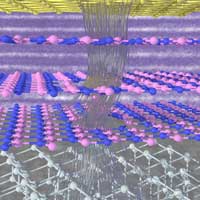 Until now, hexagonal boron nitride was considered the insulator of choice for miniaturized transistors -- new investigations show: This may not be the way to go.
Until now, hexagonal boron nitride was considered the insulator of choice for miniaturized transistors -- new investigations show: This may not be the way to go.
Low-voltage, low-power pressure sensors for monitoring health
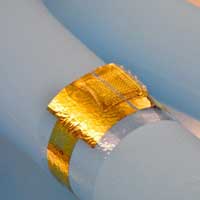 Organic electrochemical transistors (OECTs) are used to create low-voltage, low-power pressure sensors with high pressure sensitivity.
Organic electrochemical transistors (OECTs) are used to create low-voltage, low-power pressure sensors with high pressure sensitivity.
Integration of 2D materials on silicon Mie resonators for electrically controlled nanopixels
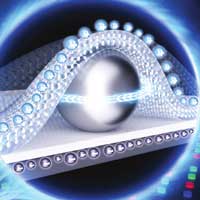 Researchers have develop Si-WS2 hybrid nanopixels with electromechanically controlled Mie-exciton optical responses with high modulation depth.
Researchers have develop Si-WS2 hybrid nanopixels with electromechanically controlled Mie-exciton optical responses with high modulation depth.
Determining the structure of a molecule with laser-induced electron diffraction
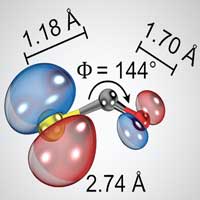 Researchers show how laboratory-frame photoelectron spectra can be used directly to determine molecular with atomic precision from laser induced electron diffraction (LIED).
Researchers show how laboratory-frame photoelectron spectra can be used directly to determine molecular with atomic precision from laser induced electron diffraction (LIED).
A liquid crystal walks into an optical resonator: new research helps model future optoelectronic devices
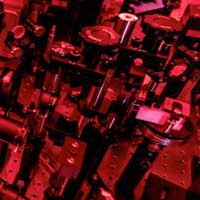 Researchers propose a photonic device from two optical resonators with liquid crystals inside them to study the optical properties of this system that can be useful for future generations of optoelectronic and spinoptronic devices.
Researchers propose a photonic device from two optical resonators with liquid crystals inside them to study the optical properties of this system that can be useful for future generations of optoelectronic and spinoptronic devices.
'Wearable microgrid' uses the human body to sustainably power small gadgets
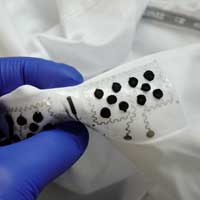 Nanoengineers have developed a 'wearable microgrid' that harvests and stores energy from the human body to power small electronics. It consists of three main parts: sweat-powered biofuel cells, motion-powered devices called triboelectric generators, and energy-storing supercapacitors. All parts are flexible, washable and can be screen printed onto clothing.
Nanoengineers have developed a 'wearable microgrid' that harvests and stores energy from the human body to power small electronics. It consists of three main parts: sweat-powered biofuel cells, motion-powered devices called triboelectric generators, and energy-storing supercapacitors. All parts are flexible, washable and can be screen printed onto clothing.
Combined technique using diamond probes enables nanoscale imaging of magnetic vortex structures
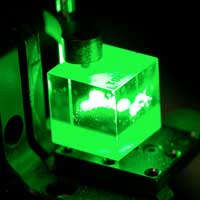 In progress towards the creation of more effective data storage systems, researchers found that magnetometry exploiting color center defects in diamond probes and magneto-optic imaging found to complement each other.
In progress towards the creation of more effective data storage systems, researchers found that magnetometry exploiting color center defects in diamond probes and magneto-optic imaging found to complement each other.
Subscribe to:
Comments (Atom)
